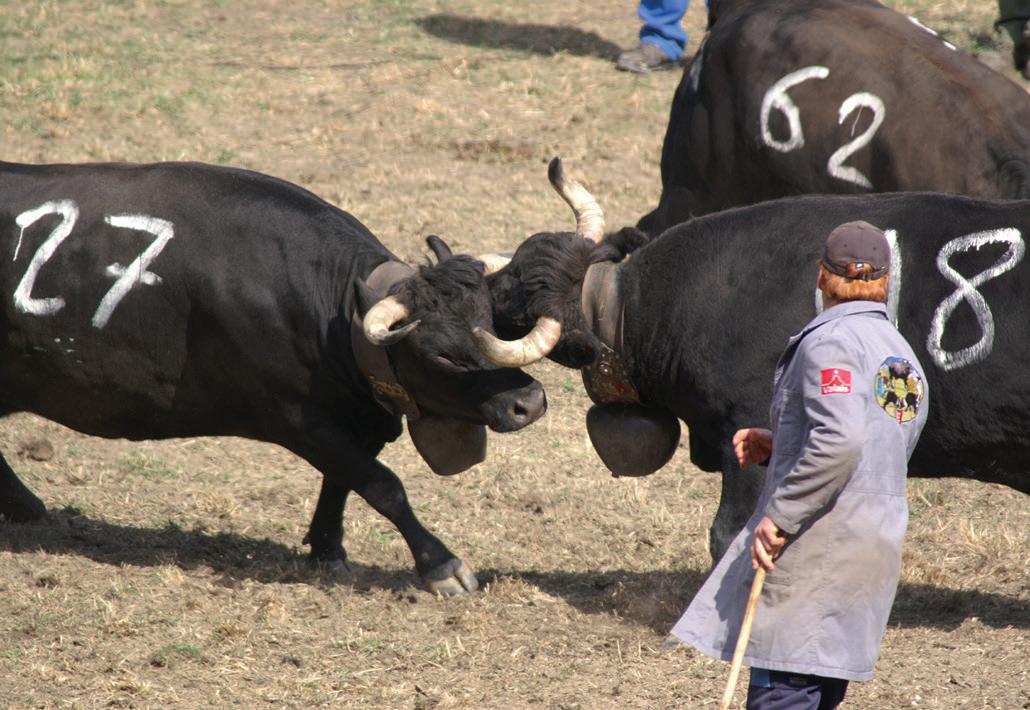
1 minute read
Eringer
Eringer cow in the canton of Valais (Adobe Stock)
Origin and development
Ancestors of the Eringer (Hérens) breed were present in Valais as long ago as 3000 BC. In 1885, breeding for uniform colour was introduced, leading to the development of the separate (pied) Evolène breed. Eringer cattle can be found from Lower Valais to the lower part of Upper Valais. They play an important role not only economically, but also culturally: in many farms, they are bred to compete in the traditional cow fights (“combats de reine”). The Eringer is thus bred for combat, as well as for meat and milk.
Description
The animals are medium-sized, with a broad, muscular body. The bone structure is fine but solid. The head is short and broad, with pronounced horns. The limbs are short, with well-defined joints and hard hooves. The coat colour is uniform, ranging from black to reddish brown. The mucous membranes, hooves and horn tips are lead-coloured or black.

Two Eringer cows at a traditional Valais cow fight (www.raceherens.ch)
Breeding objectives
h Hardiness, health, longevity, liveliness h Mobile, sure-footed and well adapted to mountainous terrain h Good milk performance h Good size and adequate muscle to ensure good carcass value; good meat performance (daily gain 1100 g) h Calving ease










